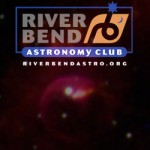
Jan 24
Star Gazing
Photo by Dan Brandon.
Come enjoy the night sky from right here in Edwardsville! The SIUE Astronomy Viewing Sessions are open to the public on even-dated Tuesdays after sunset at the William C. Shaw Skylab on the north edge of campus.
Winter/Spring 2014
Our first session for the spring semester will be January 28th at 7pm, weather dependent. Please call 618-650-1013 after 6pm on that date to see if we are still on!
The spring semester sessions are being hosted by Dr. Nicole Gugliucci, postdoctoral fellow with the SIUE STEM Center. Please call 618-650-1013 after 6pm on the day of the session to see if we are open, as bad weather and other schedule conflicts may occur. Our start time will be changing with the season, so see calendar below for times we are open.
Spring 2014 Dates and Times!
January 28th, 7pm
February 4th, 7pm
February 18th, 7pm
March 4th, 7pm
March 18th, 8pm
April 8th, 8:30pm
April 22nd, 8:30pm
May 6th, 9pm
Click for directions STEM Ideas | Star Gazing.


